Previewing Silicon Motion SM2260 NVMe Controller With 3D MLC NAND (512GB)
by Billy Tallis on February 17, 2017 9:00 AM ESTATTO
ATTO's Disk Benchmark is a quick and easy freeware tool to measure drive performance across various transfer sizes.
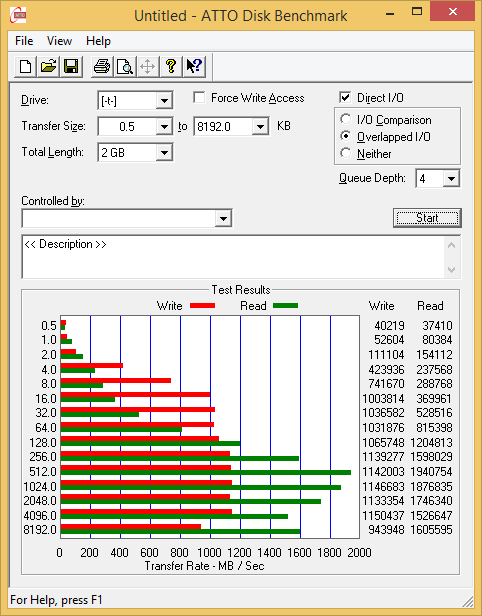 |
|||||||||
The SM2260 is close to its full write speed when the transfer size is 16kB, but full read speed takes much longer to attain and occurs at 512kB, after which thermal throttling slows things back down.
AS-SSD
AS-SSD is another quick and free benchmark tool. It uses incompressible data for all of its tests, making it an easy way to keep an eye on which drives are relying on transparent data compression. The short duration of the test makes it a decent indicator of peak drive performance.
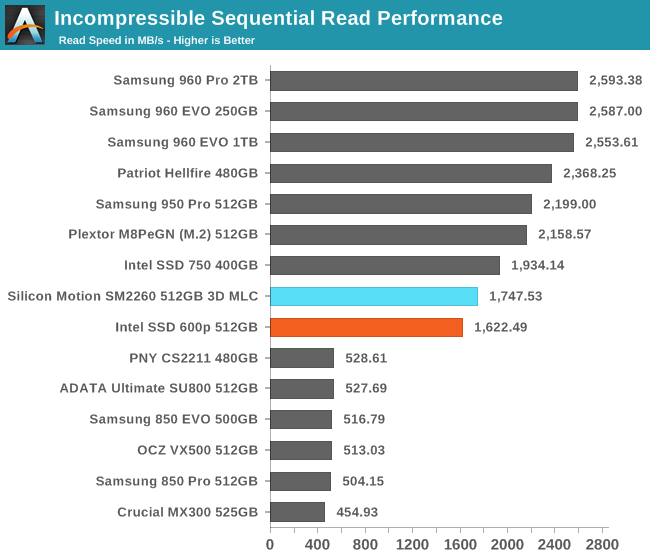
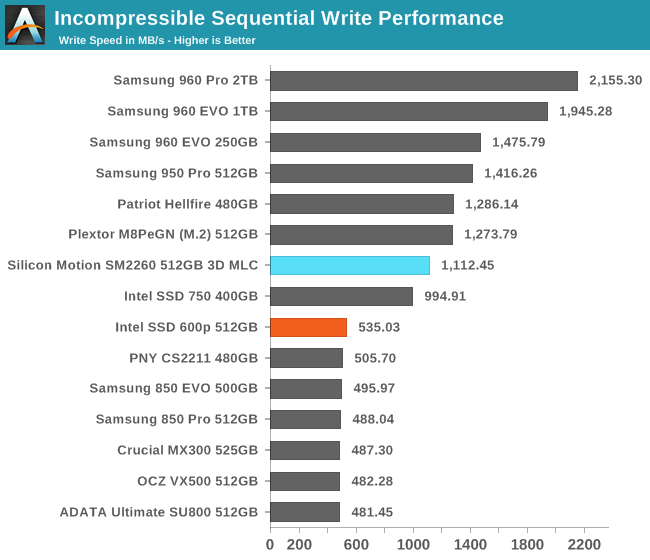
The peak sequential read speed of the SM2260 sample as measured by AS-SSD is slightly higher than the Intel SSD 600p instead of being tied as shown by our longer IOmeter test, but they both are still behind the rest of the NVMe crowd. For write speed, the SLC cache enables the SM2260 to beat the Intel SSD 750 in addition to the 600p, but it is also slightly slower than its more recent NVMe competition.
Idle Power Consumption
Since the ATSB tests based on real-world usage cut idle times short to 25ms, their power consumption scores paint an inaccurate picture of the relative suitability of drives for mobile use. During real-world client use, a solid state drive will spend far more time idle than actively processing commands. We report two measures of idle power consumption: active idle where the SSD is not in use but has not been put in to any low-power sleep state, and idle power consumption in the deepest sleep state supported by our testbed. For NVMe SSDs, the lowest drive power state is measured but PCIe Active State Power Management (ASPM) is not used due to limitations of this motherboard. For SATA SSDs, aggressive link power management is used to put the SATA link into slumber state. Many SSDs support a deeper DevSleep state, but this cannot be engaged using ordinary desktop platforms.
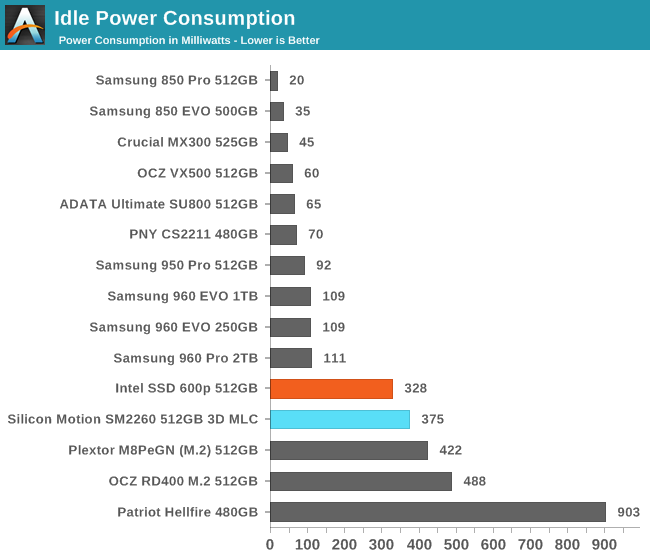
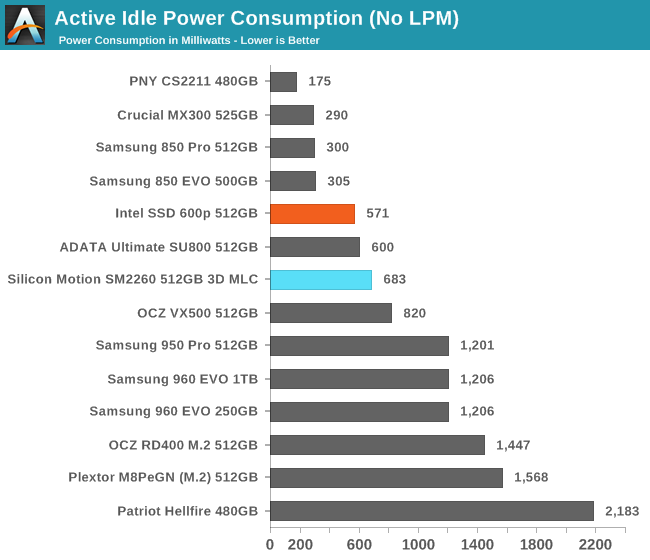
The SM2260 sample has slightly worse idle power consumption than the Intel SSD 600p, but it's ahead of the Plextor M8Pe and OCZ RD400, while the Phison E7-based Patriot Hellfire is in a distant last place among M.2 PCIe SSDs. Samsung continues to deliver far better idle power that is close to what we typically see for SATA SSDs.
For active idle power without making use of any explicit power saving modes, the SM2260 does better than any PCIe SSD and better than at least one SATA SSD, but the SM2260 sample is still using a bit more power than the Intel SSD 600p.










27 Comments
View All Comments
motigez - Sunday, February 19, 2017 - link
Honestly, at this point, TLC is the only viable technology for Client market, the incremental performance benefit you may get on MLC based SSD just don't worth it, and I expect to see little to no traction on those moving forward.LordanSS - Sunday, February 19, 2017 - link
To be very honest, a 3D MLC at 40nm has very good endurance, which would be good for a usage of heavy writes.If you're dealing with video capture and editing, it'd be a good choice over 3D TLC, even tho 3D TLC at 40nm has decent endurance as well.
leexgx - Tuesday, February 21, 2017 - link
to bad they did not continue the BX100 line as it had insane low power use (still fast enough for a low end SSD) BX200 and higher was like the worst SSD for low end SSD and power useRanger1065 - Wednesday, February 22, 2017 - link
Does anyone really care about this? The number of comments seems to indicate a comprehensive "NO." Another article, another step towards oblivion. Great job Anandtech.BrokenCrayons - Wednesday, February 22, 2017 - link
I see you're back to once again try to decry the site. It's funny if things are so bad that you keep coming back to read articles, but that's a special sort of problem, I suppose. Anyway, since you're having trouble with reading comprehension, most of the comments swirl around the drive's poor performance relative to other products. Just because someone doesn't leap to their feet to applaud a device that landed at the bottom of a chart doesn't mean the reviewer, the article, or the company publishing it is doing something wrong by reporting their test results. Just because people are generally in agreement with the results via their comments certainly doesn't indicate there's a problem with the review. You're just trying to project your silly opinion on others and hope to bend reality to your will by getting prophetic about the future...or you're trolling...probably both.BrokenCrayons - Wednesday, February 22, 2017 - link
I see you're back to once again try to decry the site. It's funny if things are so bad that you keep coming back to read articles, but that's a special sort of problem, I suppose. Anyway, since you're having trouble with reading comprehension, most of the comments swirl around the drive's poor performance relative to other products. Just because someone doesn't leap to their feet to applaud a device that landed at the bottom of a chart doesn't mean the reviewer, the article, or the company publishing it is doing something wrong by reporting their test results. Just because people are generally in agreement with the results via their comments certainly doesn't indicate there's a problem with the review. You're just trying to project your silly opinion on others and hope to bend reality to your will by getting prophetic about the future...or you're trolling...probably both.watzupken - Saturday, February 25, 2017 - link
So far, the Silicon Motion and Phison's controllers always seem to perform poorly with consistency. They don't seem like they are trying to fix it with each iteration of their controller.